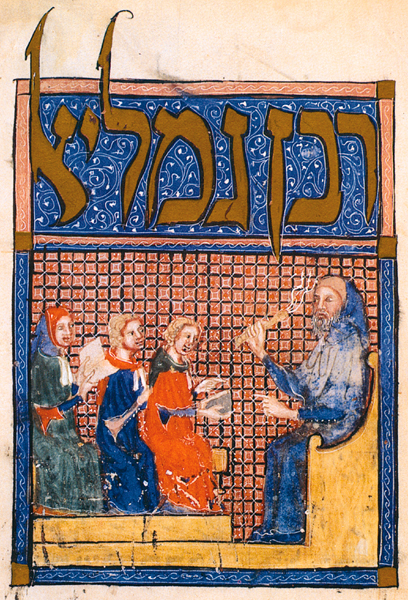Image Details

Sarajevo National Museum
Rabban Gamaliel, master of the rabbinic academy, instructs his students in this illumination from the Sarajevo Haggadah. The Haggadah credits Gamaliel with introducing the requirement that the symbolic significance of the food served during the Seder be explained during the meal. Some scholars who assume the Last Supper was a Seder have suggested that Jesus deliberately explained the significance of the bread and wine in fulfillment of this requirement.
But the requirement may not have even been in place in the time of Jesus. There were two leaders of the rabbinic academy called Gamaliel: One lived around the time of Jesus; the other, after the Temple was destroyed in 70 C.E. The Gamaliel of the Haggadah appears to be the latter figure, for he talks about the time when the Temple stood in the past tense. If this latter Gamaliel instituted the Seder meal requirements, then Jesus’ symbolic explanation of the bread and wine cannot be connected with them.
Produced in Spain in the 14th century, the Sarajevo Haggadah was brought to Italy after the Jews were expelled from Spain in 1492. The manuscript had traveled to Sarajevo by 1894, when a young Jewish boy brought it with him to school. His father had died, leaving the family destitute, and he hoped to sell the manuscript. It was purchased by the Sarajevo National Museum. During World War II, when the Nazis demanded the manuscript be turned over to them, the museum’s Muslim curator secretly passed the manuscript to a local Muslim preacher, who stashed it under the doorstep of a village mosque until the war ended. When civil war broke out in Sarajevo in 1992, the manuscript was again hidden away, in a vault beneath the National Bank. It remains there today, awaiting the rebuilding of the Sarajevo National Museum.
